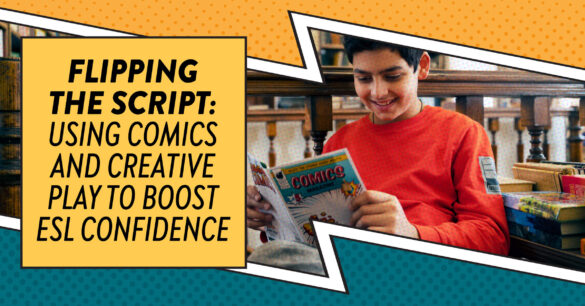By Ragavendran SS
When I took up a part-time role as an ESL trainer at a local language institute, I was tasked with leading a summer course for students in grades 6 through 12. Most of these students had been attending English-medium schools for years. On paper, they had a solid grasp of grammar, vocabulary, and reading comprehension. They could write essays, complete worksheets, and pass exams with reasonable ease. Yet, when it came to speaking, they froze.
Even in informal situations, their spoken English was hesitant, heavily accented by their mother tongues, and often peppered with awkward pauses. I noticed a consistent pattern across the group: they were fluent readers but reluctant speakers.
This mismatch between their academic proficiency and verbal confidence wasn’t due to a lack of intelligence or effort—it was emotional. There was a persistent fear of making mistakes, of sounding “wrong” or being laughed at by their peers. Many students, when prompted to speak, would default to silence or switch back to their first language.
The issues were familiar to anyone who has worked with ESL learners in multilingual societies:
- Sentence structures directly translated from their first languages often resulted in grammatical constructions that felt stilted or confusing in English;
- Intonation patterns that sounded unnatural or robotic, lacking the rise and fall that mark conversational fluency;
- Frequent pauses as students searched for the right word, sometimes abandoning their thoughts mid-sentence;
- The use of local-language interjections—“aiyo,” “arre,” “da,” or “pa”—that crept into English sentences and further marked their speech as uncertain or mixed.
What struck me most was that these students weren’t lacking in ideas or personality. When chatting in their native languages, they were expressive, animated, and quick-witted. The challenge wasn’t content—it was confidence.
I realized early on that if I wanted to help them speak fluently in English, I couldn’t rely on conventional grammar drills or textbook dialogues. I needed to create a space where students felt safe enough to take risks, make mistakes, and discover their own voice in English.
Flipping the Script: From Theory to Performance
The original class structure—one hour of theory and thirty minutes of activities—wasn’t working. The students were still too hesitant, translating thoughts before speaking. So, I flipped the script: one hour of hands-on speaking practice followed by thirty minutes of theory. The goal was to immerse them in speaking right from the start, minimizing theory until later, when they’d already absorbed some natural patterns through active use.
We tried all the usual methods—extempore, group discussions, word-building games with a dictionary. These strategies were moderately helpful, but the students were still cautious about speaking.
That’s When We Brought in the Comics
I wanted to find something fun, familiar, and rich in spoken language—and remembered how much personality and informal dialogue was packed into the Archie comics I used to read as a teenager.
They may not have been “educational” texts, but those comics were perfect for what we needed, as they contained:
- Natural, colloquial English, unlike the standard “You are at a Post Office” or “Where is the library?” conversation in a class text;
- A mix of tones, expressions, and emotions;
- And most importantly, short, punchy dialogue that encouraged rhythm and voice modulation.
I gave students a simple challenge: pick an Archie comic strip, assign roles, and perform it aloud. The only rule? No pausing to read or break the flow. They had to prepare, rehearse, and then perform the whole thing fluidly—like a mini-play.
The first few rounds of comic performances were rough. Students paused frequently, their pronunciations were off, and many fell back into the comfort of their native languages.
Building Confidence Through Feedback and Performance
Instead of correcting students immediately after every mistake, I focused on providing group feedback. After each performance, we spent 10 minutes discussing common errors. This approach allowed us to focus on the issues—such as pronunciation, intonation, or sentence structure—without singling anyone out. By identifying patterns, the students became more mindful of their language use and could self-correct in subsequent performances.
After a few rounds of performances, the students began to anticipate the feedback and actively worked to avoid the same mistakes in the future. If a student stumbled over a particular phrase or sentence structure in one class, the next time they came across a similar dialogue, they would handle it with more confidence. The more they practiced, the more they internalized the corrections.
Creative Problem-Solving: The Use of Props
To make the performances even more engaging, I encouraged students to think beyond just reading lines. We incorporated props and creative movement.
Older students became trees, chairs, or even vehicles—anything to bring the comic scenes to life. For example, if a comic depicted a character riding in a car, one of the bigger students would act as the car, carrying smaller students around while they recited their lines.
This physical activity helped break up the monotony and brought a layer of fun to the learning experience. It also encouraged students to think critically about the setting and context of the dialogues they were performing.
Creating a Comic Culture in the Classroom
By the end of the two-week mark, the impact of these exercises was clear. The students began to ask for more comics to read and act out. They started debating which stories were the best for performances, showing an eagerness to engage with the material.
Some even suggested branching out into skits and one-act plays, but I encouraged them to stick with comics for a bit longer. I wanted students to fully grasp the rhythm and structure of dialogue before moving on to more complex forms of storytelling.
The Results: A Shift in Confidence and Fluency
Within a month, the students were noticeably more fluent. They hesitated less and began using English interjections—such as “oops,” “phew,” and “yeesh”—even outside of class. The transition from hesitating to speaking fluently was evident not just in their performances, but in casual conversations.
The best part? They no longer translated word-for-word from their first languages. They started thinking in English, internalizing the language’s rhythm and flow. Most importantly, they had gained something invaluable: confidence.
The students were absolutely certain they could speak English, even if they knew they still had a long way to go before speaking flawlessly. The fear of speaking and making mistakes had dissipated.
It wasn’t just language practice—it was language immersion, powered by performance and play.
Takeaways for Educators
- Flip the Approach: Swap traditional lecture-style learning for interactive, hands-on practice. A 1:1 activity-to-theory ratio enhances engagement and accelerates learning.
- Promote Group Dynamics: Encourage peer collaboration and group performance. This builds confidence and normalizes mistakes.
- Use Comics for Immersion: Comics offer a fun, low-pressure way to practice real conversational English. Their visual and verbal nature aids vocabulary and fluency.
- Allow Creative Expression: Let students make mistakes and experiment. Language learning is more effective when students feel free to play with the language.
- Gradually Progress to Complex Forms: Start with simple, engaging material like comics and gradually move to skits or plays as students become more comfortable.



